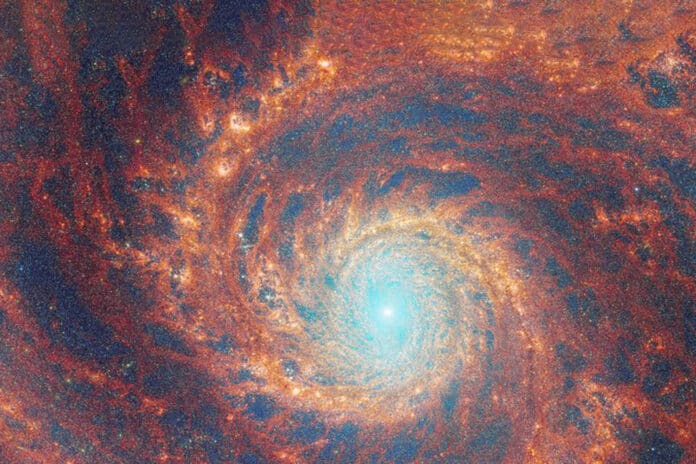NASA/ESA/CSA James Webb Space Telescope recently captured an image of grand design spiral galaxy M51. The image shows the galaxy’s graceful winding arms stretched.
M51, also known as NGC 5194, is located in the constellation Canes Venatici, around 27 million light-years from Earth. It has a turbulent relationship with its nearby neighbor, the dwarf galaxy NGC 5195. These two galaxies’ interaction has made their galactic neighbors one of the more extensively researched galaxy pairings in the night sky. The stately form of the galaxy’s large and unmistakable spiral arms is assumed to be partly due to the gravitational effect of M51’s smaller companion.
A group of observations collectively known as Feedback in Emerging Extragalactic Star Clusters, or FEAST includes this Webb image of M51. The FEAST observations aimed to provide insight into the interactions between stellar feedback and star formation in systems outside of the Milky Way galaxy.
The filamentary warmed dust that permeates the galaxy’s medium may be seen in this image’s dark red patches. While orange and yellow hues reveal the regions of ionized gas by the recently formed star clusters, red regions display the reprocessed light from complex molecules building on dust grains. The medium of the galaxy is dramatically altered by stellar feedback, which also produces a complicated web of luminous knots and vast black bubbles.
This galactic portrait is a composite image that integrates data from Webb’s Near-InfraRed Camera (NIRCam) and Mid-InfraRed Instrument (MIRI).
